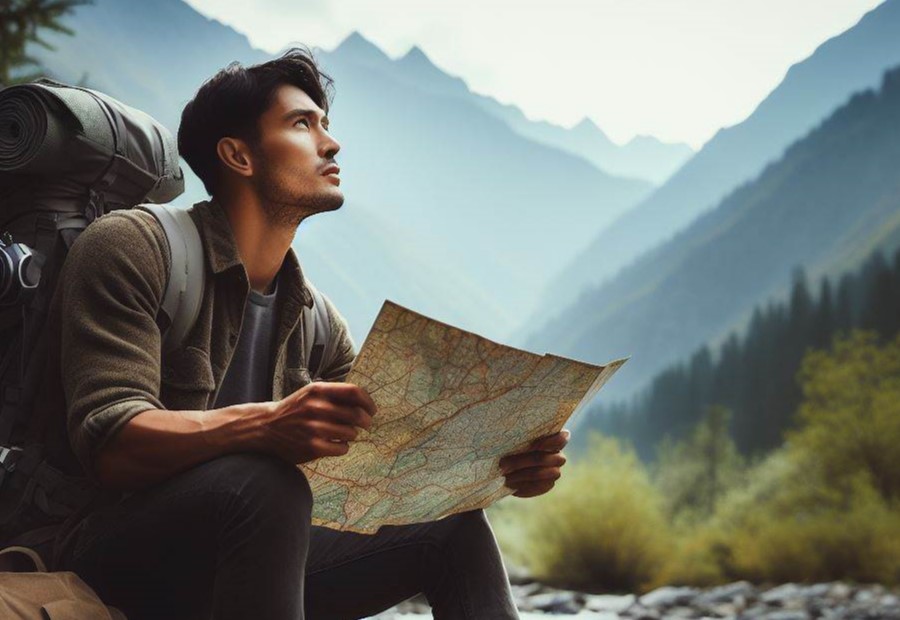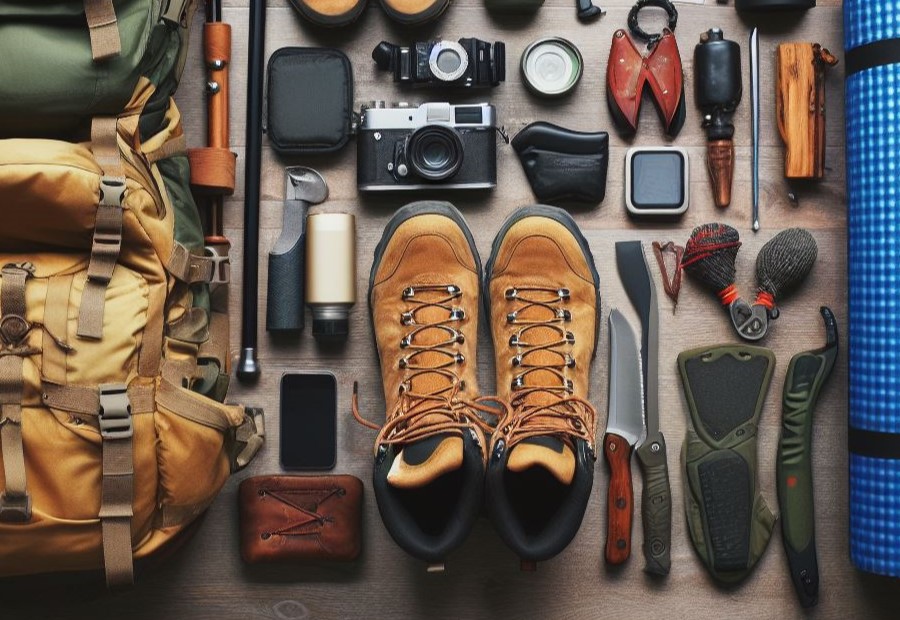Going on an outdoor adventure can be an exhilarating and rewarding experience, providing opportunities to explore nature, challenge oneself, and create lasting memories. However, it is essential to be well-prepared before embarking on these adventures to ensure a safe and enjoyable experience.
By understanding the risks and challenges, researching the destination, checking weather conditions, and packing essential gear and supplies, you can be better equipped for your outdoor adventure.
Following safety measures such as informing others about your plans, knowing basic first aid and navigation skills, being aware of wildlife and natural hazards, and adhering to leave no trace principles are crucial for your safety.
Adopting a buddy system, using proper safety equipment, ensuring proper hydration and nutrition, and understanding your physical limits are also important in staying safe during outdoor adventures.
By prioritizing safety and responsibility, you can fully enjoy your outdoor adventures while appreciating and preserving the natural environment.
Why is it Important to Prepare for Outdoor Adventures?

When it comes to outdoor adventures, preparation is key. In this section, we’ll dive into why it’s crucial to be well-prepared before embarking on any outdoor excursion.
From understanding the potential risks and challenges to ensuring a safe and enjoyable experience, we’ll explore the importance of proper planning and readiness.
So, lace up your boots, grab your gear, and let’s uncover why preparation is essential in the world of outdoor adventures.
Understanding the Risks and Challenges
Before embarking on any outdoor adventure, it is crucial to understand the risks and challenges involved. Here are some key considerations to keep in mind:
- Understanding the terrain: Take the time to familiarize yourself with the topography and landscape of the area you plan to visit. This will help you assess any physical challenges, such as steep slopes, rocky surfaces, or dense forests.
- Considering weather conditions: It is essential to research the weather patterns and forecasts in order to anticipate potential hazards. This includes storms, extreme temperatures, or flash floods.
- Awareness of wildlife encounters: Be mindful of the native wildlife species that may inhabit the area. Understanding their behavior and potential dangers can help prevent unexpected encounters.
- Developing navigational skills: Having a good understanding of map reading, using a compass, and GPS navigation can help you stay on course and avoid getting lost.
- Evaluating physical fitness: Assess your own physical capabilities and limitations. Remember that outdoor activities often require stamina, strength, and endurance. Make sure you are adequately prepared and consider training if necessary.
- Assessing personal abilities: Take into account your own skills and experience in outdoor activities. It is important to choose adventures that align with your level of expertise to minimize risks.
- Using appropriate equipment and gear: Ensure that you have the right gear and equipment for the specific activity and environment. It is also important to check that the equipment is in good condition and properly used, as this reduces the risk of accidents.
- Being prepared for emergencies: It is essential to understand basic first aid techniques, carry essential supplies, and be ready to handle emergencies. Knowing how to call for help or perform self-rescue can be vital.
By comprehensively understanding the risks and challenges that outdoor adventures may present, you can make informed decisions and enjoy your experience while prioritizing safety.
What to Consider Before Going on an Outdoor Adventure?

Before embarking on an outdoor adventure, there are important factors to consider that can make or break your experience. From researching your destination and checking weather conditions to packing essential gear and creating a detailed itinerary, each step plays a crucial role in ensuring a successful trip.
By learning more about these key aspects, you’ll be well-prepared to fully enjoy the wonders of nature and make the most out of your outdoor adventure. So, let’s dive in and discover what you need to know before setting off!
Researching the Destination
When researching the destination for your outdoor adventure, it is crucial to thoroughly gather information beforehand. Here are important steps to consider:
1. Identify the location: Determine the specific area or region where you intend to go to gather relevant information about the terrain, climate, and any potential risks associated with that particular destination.
2. Understand the local environment: Conduct research on the flora, fauna, and natural features of the area. This will help you be aware of any wildlife encounters or potential hazards such as poisonous plants or steep cliffs.
3. Study the weather conditions: Check weather forecasts for the duration of your adventure and pay attention to temperature fluctuations, precipitation levels, and any severe weather warnings. This will help you prepare appropriate clothing and gear to ensure your safety and comfort.
4. Assess accessibility and infrastructure: Determine the accessibility of the destination and the availability of essential facilities such as campsites, water sources, and emergency services. This information is crucial for planning your itinerary and ensuring you have the necessary resources during your trip.
5. Learn about local regulations: Familiarize yourself with any permits, camping restrictions, or protected areas within your chosen destination. Adhering to these regulations will help preserve the environment and avoid any legal issues.
Researching the destination before embarking on your outdoor adventure is essential to ensure a safe and enjoyable experience. By understanding the specific conditions and potential challenges, you can adequately prepare and make informed decisions throughout your journey.
Checking Weather Conditions
Checking weather conditions is an essential aspect of preparing for outdoor adventures. It is important to be aware of the current and forecasted weather to ensure your safety and enjoyment. Here are some key points to consider when checking weather conditions:
1. Stay updated: Before heading out, check the weather forecast from reliable sources. Pay attention to factors such as temperature, precipitation, wind speed, and any severe weather alerts.
2. Dress accordingly: Based on the weather forecast, dress in layers and wear appropriate clothing for the conditions. If it’s going to be cold, ensure you have warm clothing and accessories like hats and gloves. If rain is expected, bring a waterproof jacket or poncho.
3. Plan activities accordingly: Certain weather conditions may impact your planned activities. For example, if there is a high chance of thunderstorms, it may be best to avoid open areas or stay away from exposed peaks or bodies of water where lightning is a risk.
4. Consider the terrain: Different weather conditions can affect the safety and accessibility of certain terrains. Heavy rain can make trails slippery or lead to flash flooding. Strong winds can make it challenging to hike or engage in water activities. Be mindful of these factors when choosing your adventure location.
5. Be flexible: Weather conditions can change quickly, so it’s important to be prepared for unexpected changes. Have a backup plan or alternative activities in case the weather doesn’t cooperate.
Pro-tip: Always carry a reliable, portable weather radio or have access to a weather app on your smartphone to stay updated on any changes in weather conditions during your outdoor adventure. Stay safe and enjoy your time in nature!
Packing Essential Gear and Supplies
When preparing for an outdoor adventure, it is vital to pack all the necessary gear and supplies to ensure a safe and enjoyable experience. One must pack navigation equipment such as a map, compass, and GPS device to help navigate through unfamiliar terrain.
Another essential item is a well-stocked first aid kit, including bandages, antiseptic ointment, pain relievers, and any required prescription medications. Proper clothing is also crucial.
Depending on the weather conditions, one should pack appropriate clothing to stay comfortable and protected, including layers for changing temperatures, waterproof gear, and sturdy footwear.
It is also important to carry enough food and water to sustain oneself throughout the adventure. Lightweight, non-perishable food items should be packed, and to ensure a clean water supply, one can make use of water purification tablets or a water filter.
If the adventure involves overnight stays, remember to bring a tent, sleeping bag, and sleeping pad for a comfortable night’s sleep. In case of unforeseen circumstances, always include emergency equipment like a whistle, a fire starter, a flashlight, extra batteries, and a multi-tool.
Do not forget to pack personal items such as sunscreen, insect repellent, toiletries, and a fully charged cell phone for emergencies. By making sure to pack all these essential gear and supplies, one can be well-prepared for their outdoor adventure and fully enjoy the beauty of nature.
Creating an Itinerary
Creating an itinerary is crucial for a successful and enjoyable outdoor adventure. When embarking on your expedition, it’s important to gather information about the destination. Research the location’s terrain, weather patterns, available amenities, and any permits or fees required.
- Plan the activities that you want to engage in during your adventure. Whether it’s hiking, camping, kayaking, or wildlife spotting, outlining your desired activities will help you organize your time and resources effectively.
- Estimate the travel time required to reach your destination and allow for any delays or unforeseen circumstances. Consider the distance, mode of transportation, and road conditions.
- Allocate sufficient time for each activity and make sure to leave enough time for rest, meals, and relaxation. Avoid overpacking your itinerary to prevent exhaustion and ensure you have ample time to fully appreciate the surroundings.
- Consider alternative options in case of unexpected weather conditions or other factors that may disrupt your original itinerary. This will help you adapt and make the most of your adventure.
By creating a well-planned itinerary, you can maximize your outdoor adventure and make the most of your time. Remember to be flexible and open to changes along the way, allowing yourself the freedom to explore and discover new experiences.
What are the Safety Measures to Follow?

When embarking on an outdoor adventure, it’s crucial to prioritize safety. In this section, we’ll explore the essential safety measures you need to follow to ensure a successful and secure experience.
From informing others about your plans to acquiring basic first aid and navigation skills, being aware of wildlife and natural hazards, and adhering to Leave No Trace principles, we’ll provide you with valuable insights and tips to keep you protected throughout your outdoor journey.
Informing Others about Your Plans
Informing others about your plans is crucial to ensure your safety during outdoor adventures. It is important to share details of your itinerary, including the destination, estimated time of arrival, and expected return.
By informing others, you can receive help and support in case of emergencies or delays. Make sure to provide specific information, such as the trail or route you plan to take and any alternate routes you may consider. This way, if you encounter any difficulties or get lost, rescue teams can quickly locate you.
In addition, remember to inform someone about the equipment you will be carrying, including the type of gear and supplies you have packed. This information will help others assess your preparedness and advise you on any additional items you should include.
Communicating your plans is not only crucial for safety but also for peace of mind. It allows your loved ones to know your whereabouts and reduces their concerns about your well-being while you are away. Remember to update them if any changes occur to your plans.
Informing others about your plans is a responsible step that should not be overlooked. It enhances your safety and ensures that someone is aware of your activities outdoors.
Knowing Basic First Aid and Navigation Skills
Knowing basic first aid is crucial for outdoor adventures and is a skill that everyone should learn. By understanding how to provide CPR, treat cuts and wounds, and manage sprains and fractures, you can be prepared to handle emergencies that may arise.
Navigation skills are also essential when venturing into the wilderness. It is important to familiarize yourself with using a compass, reading maps, and understanding topography to ensure that you don’t get lost.
Additionally, being able to identify common outdoor hazards is important for your safety. Learn how to recognize poisonous plants, dangerous wildlife, and potential natural hazards such as avalanches or flash floods.
In case of an emergency, it is useful to practice using emergency signaling devices like whistles or signal mirrors to attract attention and seek help.
As part of your preparation, always make sure to carry a well-equipped first aid kit. Include essentials like bandages, disinfectants, pain relievers, and any necessary prescription medications.
Pro-tip: Enroll in a wilderness first aid course to gain more in-depth knowledge and training in addressing medical emergencies in remote or challenging outdoor settings.
Being Aware of Wildlife and Natural Hazards
Being aware of wildlife and natural hazards is crucial when going on an outdoor adventure. Here are some key points to consider:
1. Wildlife encounters: Familiarize yourself with the native wildlife in the area where you’ll be adventuring. Be aware of potential risks and behaviors of animals such as bears, snakes, or insects. Keep a safe distance and avoid disturbing their natural habitat. Take precautions to avoid attracting wildlife by properly storing food and waste.
2. Natural hazards: Study the terrain and potential natural hazards of the area. This can include avalanches, flash floods, rockfalls, or extreme weather conditions. Check weather forecasts and regional advisories to stay informed about potential risks. Plan your activities accordingly and be prepared to change your plans if necessary.
3. Proper gear and equipment: Equip yourself with the necessary tools and equipment for encountering wildlife and navigating natural hazards. Carry bear spray or repellents to ward off potential animal encounters. Pack a first aid kit and know how to use it. Take adequate safety measures such as wearing appropriate clothing and footwear, carrying navigation tools, and bringing extra supplies for emergencies.
Remember, understanding the potential risks and taking necessary precautions can greatly enhance your safety while enjoying outdoor adventures. Be prepared, stay vigilant, and respect the natural environment.
Pro-tip: Familiarize yourself with the rules and regulations of the area you’ll be exploring, as well as any specific guidelines or restrictions regarding wildlife encounters. This will help ensure a responsible and enjoyable outdoor experience.
Following Leave No Trace Principles
It is essential to follow Leave No Trace Principles to minimize your impact on the environment while enjoying outdoor adventures. Here are some guidelines to incorporate:
- Plan ahead and prepare: Research the specific rules and regulations of the area you will be visiting and make sure to obtain any necessary permits. Pack all the essential gear and supplies you will need.
- Travel and camp on durable surfaces: Stick to established trails and campsites to avoid damaging vegetation and soil. Avoid creating new trails.
- Dispose of waste properly: Pack out all your trash, including food waste. Leave the natural environment as you found it.
- Leave what you find: Do not take natural or cultural artifacts with you. Leave rocks, plants, and other natural features undisturbed.
- Minimize campfire impacts: Use existing fire rings if available and keep your fire small. Make sure to fully extinguish the fire and leave no trace of it.
- Respect wildlife: Observe wildlife from a distance and do not approach or feed them. Keep your food and trash secure to avoid attracting wildlife.
- Be considerate of other visitors: Keep noise levels low, respect other campers’ privacy, and yield to hikers on the trail.
Remember, following Leave No Trace Principles ensures that future generations can also enjoy the beauty of the outdoors. Leave only footprints, take only memories!
How to Stay Safe During Outdoor Adventures?

When it comes to outdoor adventures, safety should always be a top priority. In this section, we’ll explore some essential tips on how to stay safe during your outdoor escapades.
From adopting a buddy system to ensuring you have the proper safety equipment, we’ll cover the key strategies to keep you protected. We’ll also delve into the importance of proper hydration and nutrition, as well as understanding your physical limits.
So let’s dive in and discover how you can make your outdoor journey both thrilling and safe!
Adopting a Buddy System
Adopting a buddy system is crucial for ensuring safety during outdoor adventures. It provides an additional layer of support and helps mitigate risks. Here are the reasons why you should consider adopting a buddy system:
- Enhanced Safety: Adopting a buddy system means you have someone to watch your back and help you in case of emergencies. They can assist with navigation, lend a hand during challenging terrain, and provide immediate help if you encounter any difficulties.
- Shared Responsibilities: With a buddy, you can divide tasks and responsibilities, making it easier to manage various aspects of the adventure. Adopting a buddy system and having someone to share the load enhances efficiency and reduces the risk of exhaustion.
- Emergency Preparedness: In case of accidents or injuries, adopting a buddy system ensures that a buddy can provide immediate assistance. They can administer basic first aid, call for help if needed, or go for help if the situation demands it. Having another person present significantly improves response time and the chances of a successful outcome.
- Emotional Support: Outdoor adventures can sometimes be challenging, physically and mentally. Having a buddy by your side, adopting a buddy system, offers emotional support during tough moments, boosts morale, and encourages you to push through difficult situations.
- Accountability: Adopting a buddy system promotes responsible behavior and decision-making. When you have someone else relying on you, it encourages both individuals to adhere to safety measures, follow rules, and make cautious choices, ultimately enhancing the overall safety of the adventure.
Using Proper Safety Equipment
When embarking on an outdoor expedition, it is vital to prioritize your safety by incorporating the use of appropriate safety equipment. Here are some essential items to take into account:
- A durable and well-fitting helmet to safeguard your head during activities such as biking or climbing.
- Adequate footwear with excellent grip to prevent slips and falls, particularly in uneven or slippery terrain.
- A life jacket or personal flotation device (PFD) when participating in water activities such as kayaking or rafting.
- Sun protection gear, including sunglasses, a wide-brimmed hat, and sunscreen, to shield yourself from harmful ultraviolet (UV) rays.
- A reliable GPS device or map and compass to navigate and avoid getting lost in unfamiliar surroundings.
- A first aid kit with necessary supplies to address any minor injuries or medical emergencies that may arise.
By utilizing these items of safety equipment, you can significantly minimize the risks associated with outdoor adventures and ensure a safer experience. Remember to always be prepared and adequately trained in the usage of the equipment.
Pro-tip: Regularly inspect and maintain your safety equipment to ensure it is in good working condition. Replace any worn-out or damaged items promptly to guarantee their effectiveness.
Proper Hydration and Nutrition
Proper hydration and nutrition are essential for a successful and safe outdoor adventure. Here are some important factors to consider:
- Drink enough water: Staying hydrated is crucial to prevent dehydration, especially in hot weather or during strenuous activities. Aim to drink at least 2-3 liters of water per day, or more depending on your level of activity and the climate.
- Pack nutritious food: Choose lightweight and high-energy foods that provide essential nutrients. Include a balance of carbohydrates, proteins, and healthy fats to sustain your energy levels throughout the day. Foods like trail mix, energy bars, fruits, and nut butter are great options.
- Plan your meals: Create a meal plan and bring enough food for the duration of your adventure. Consider the duration and intensity of your activities to determine the appropriate number of meals and snacks needed.
- Consider dietary restrictions: If you have any dietary restrictions or food allergies, make sure to pack suitable alternatives. It’s crucial to ensure that you have access to safe and satisfying food options during your outdoor adventure.
- Stay mindful of perishable foods: If you’re planning a multi-day trip, choose non-perishable food items that won’t spoil easily. This will keep your food safe to eat and reduce the risk of foodborne illnesses.
- Know the signs of dehydration and malnutrition: Familiarize yourself with the symptoms of dehydration and malnutrition, such as dizziness, fatigue, and weakness. If you experience any of these signs, prioritize rest, consume water and food, and seek medical help if necessary.
Understanding Your Physical Limits
Understanding your physical limits is crucial when participating in outdoor adventures. It is important to know your physical capabilities and not push yourself beyond what you can safely handle. By recognizing your limits, you can prevent injuries and ensure a more enjoyable experience.
To understand your physical limits, listen to your body and pay attention to signs of fatigue, pain, or discomfort. Take breaks when needed and pace yourself to avoid overexertion. It is also essential to be aware of any pre-existing medical conditions or physical restrictions that may affect your abilities.
Additionally, it is a good idea to gradually build up your physical fitness before engaging in more challenging outdoor activities. Regular exercise that focuses on strength, endurance, and flexibility can help prepare your body for the demands of outdoor adventures.
Remember, it is always better to be cautious and stay within your physical limits rather than risk injury or exhaustion. Prioritize your safety and well-being to fully enjoy your outdoor adventures.
Fact: Pushing beyond your physical limits can lead to fatigue, dehydration, and increased risk of accidents. Taking breaks and listening to your body is essential for a safe and enjoyable outdoor experience.
Frequently Asked Questions
What are the health benefits of outdoor adventures?
Engaging in outdoor activities has numerous health benefits, including physical fitness, improved mental well-being, increased exposure to vitamin D, and reduced stress levels. Outdoor adventures provide opportunities to explore nature, breathe fresh air, and disconnect from technology, leading to overall improved well-being.
How can I prevent getting lost during an outdoor adventure?
To avoid getting lost, it is important to use maps and navigation apps, and to stay on designated trails and camps. Additionally, it is advisable to carry proper navigation tools and know how to read them. Being familiar with trail markers and landmarks can also help prevent getting lost in unfamiliar areas.
What are some simple tips for staying safe during an outdoor adventure?
Some simple tips for staying safe include traveling with a companion, leaving your itinerary with a family member or friend, dressing appropriately for the activity and weather conditions, staying hydrated, and inspecting your gear to ensure it is in proper working order.
How can I prepare for emergencies during outdoor adventures?
To prepare for emergencies, it is recommended to take a wilderness first responder class to gain knowledge on responding to emergencies in outdoor settings. Carrying a first aid kit, including essential medical supplies, and knowing basic first aid principles are also crucial.
Additionally, having an emergency shelter, fire-starter kit, and extra food can help in emergency situations.
What should I consider before going on an outdoor adventure in high altitudes?
Before embarking on an outdoor adventure in high altitudes, it is important to be in good physical condition and properly acclimatize. High altitudes can pose challenges to the body, including decreased oxygen levels. It is advisable to gradually increase altitude exposure, stay hydrated, dress warmly, and take breaks when needed.
How can I protect myself from sunburn and dehydration during outdoor adventures?
To protect yourself from sunburn, even on cooler days, it is important to wear sunscreen and protective clothing. Staying hydrated is vital to prevent dehydration or heat exhaustion. Carrying extra water and avoiding drinking untreated water from natural sources can help ensure you have access to safe drinking water during your trip.

